Best Practices to Prepare for the Holiday Shopping Season

It’s never too early to start thinking about next year’s holiday shopping season. I’ve compiled five key focus areas that online retailers should consider before the official code freeze, during the height of holiday shopping, and in preparation for January’s analytics report.
1. PREPARE FOR HIGH TRAFFIC
Almost three-quarters (73%) of retailers say downtime, degraded site performance, and poor customer experience, collectively, is their top worry during peak demand periods. This past June, Target experienced a 90-minute outage that reportedly could have cost the retailer $100 million in sales — and likely inspired the development of much-needed contingency plans across the entire industry. Reach out to vendors that power different components of your site for testing to make sure that they can handle spikes in traffic.
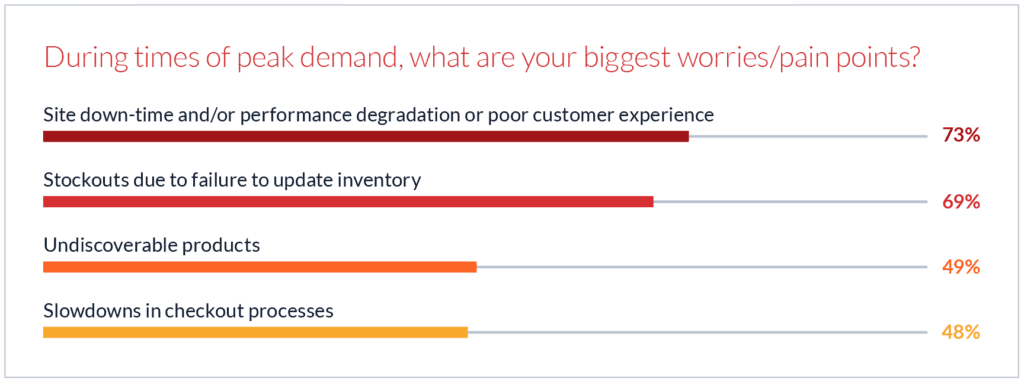
For example, if two million people shopped last year on your site over Black Friday, be sure the site can handle that many people searching and navigating at the same time (even if last year was smooth sailing). When you’re planning page-speed improvements, keep in mind that 40% of potential customers will bounce if it takes longer than three seconds to load.
2. UNDERSTAND PERFORMANCE YoY
Your number one priority post-holiday season should be to analyze statistics from the past season and compare it against the prior year. Things to keep an eye on include: click-through rate (CTR), add-to-cart (ATC) percentage, product returns, bounce rates, conversions, traffic, page load speeds, and site downtime. Here are some stats from retailers with over $100 million in revenue that you can use as a benchmark, (note: these are comprehensive numbers, not specific to the holiday shopping season):
- Forty-two percent of retailers have a CTR of 16% to 25% with 31% of respondents saying their average is above that.
- Almost half of retailers (47%) say their ATC percentage is between 11% and 15%, with a quarter of retailers (28%) averaging an ATC of 5% to 10%.
- Sixty percent of shoppers visit a site up to four times before making a purchase, with 40% making five visits or more before they buy.
By beginning this data analysis in January, as soon as your holiday season wraps, you have the time to make changes to current technology and strategies before the cycle begins again, or to move to another vendor completely.
3. MERCHANDISE FOR THE SEASON
Update your site pages with themed banners and content, and be sure to have special holiday promotions front and center on the home page. Sharing promotions ahead of time with loyal shoppers is a great way to build anticipation and give shoppers a peek into what deals you’ll be offering. Ed Kennedy, Senior Director of eCommerce Solutions Platform for Episerver, suggests that showing insiders future deals could be a way to get them to revisit the site in anticipation of the deal (Retail Dive).

You can also pre-merchandise products for specific search terms. For example, when I search “decorations” on Pottery Barn — which is an incredibly broad term — it takes me to appropriate holiday decorations, including a Merry Christmas chalkboard, fake pumpkins, and jack o’lanterns. These results are (hopefully) different than they would be before Valentine’s Day.
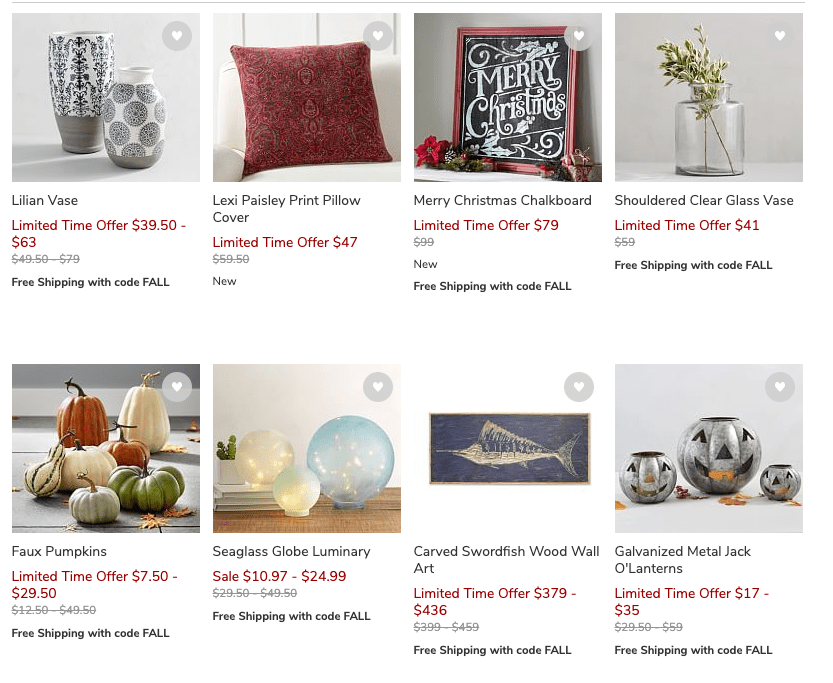
You can also pre-merchandise product categories and pages. For example, when I type “decorations” on Pottery Barn, the drop down menu gives me the option to click immediately into seasonally-themed products.
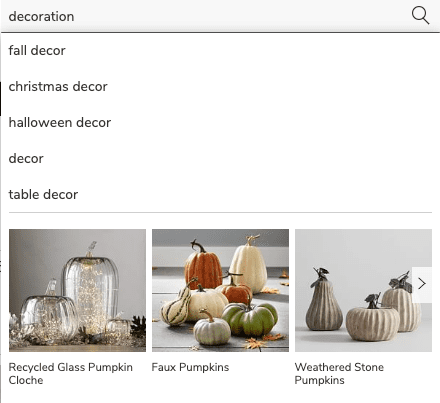
With Lucidworks Predictive Merchandiser, you’re able to pre-merchandise search results and category pages for a specific event or season.
4. CONNECT INVENTORY ACROSS ONLINE AND IN-STORE
PwC’s 2019 Holiday Outlook report revealed that 54% of people plan to shop online and 46% plan to shop in-store during the 2019 holiday season, a notable shift from 2015 when 58% of shoppers purchased goods in-store and 42% did so online. This year, Target’s hiring patterns are responding to the combination of ecommerce and brick-and-mortar by doubling the number of holiday hires that deal with sorting e-commerce orders at stores. This is inline with Adobe Analytics finding that last year was the biggest year on record for BOPIS, with a 47% adoption rate by retailers. 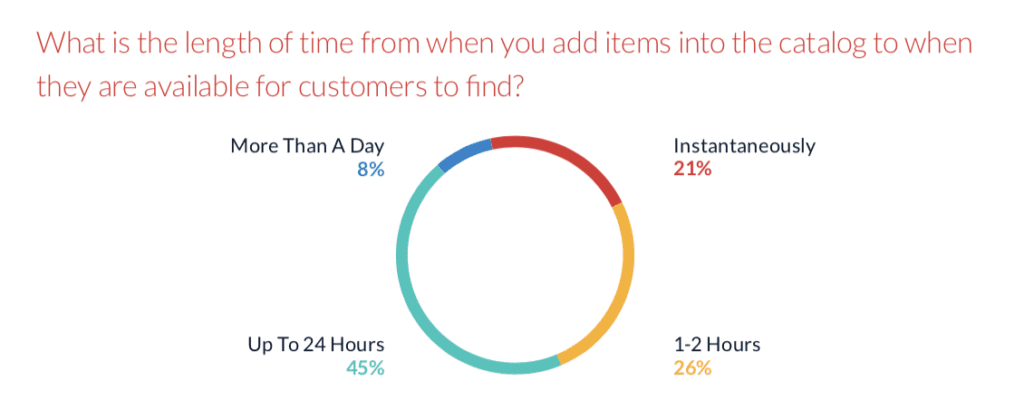
In addition to hiring more people to fulfill these online orders in stores, be sure that your inventory is able to update in real time to avoid the dreaded “no longer available” at the online checkout. More than half (53%) of retailers report that they require up to 24 hours or more to make a new catalog item available to be sold online. During peak demand times, this could leave customers with surprisingly empty carts at the last minute.
5. HAVE CUSTOMER SUPPORT START AT THE SEARCH BAR
A recent holiday shopping study from Bazaarvoice found that beginning in early October last year, there was a sustained 8% spike in user-generated content (UGC) interaction rate across their more than 6,200 brand and retailer websites. Shoppers were doing research, engaging with customer ratings, reviews, and visual content on product pages before making holiday purchases. Be sure customer support information including return policies, shipping information, and sizing charts are easily discoverable.
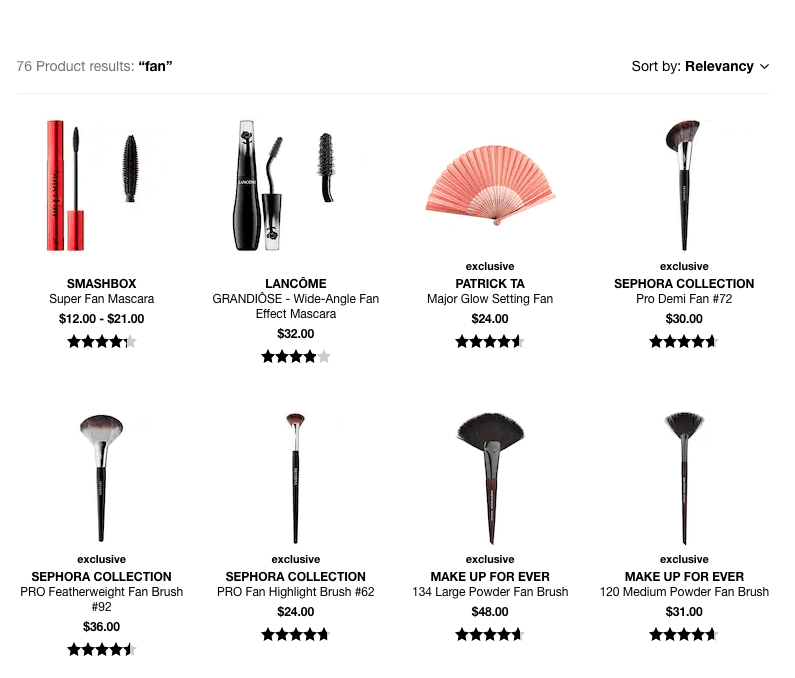
In the example above, Sephora autocorrects my query “faq” to fan. After a fruitless search, I have to scroll all the way to the bottom of the page to find customer service and support answers. Making the FAQ page more easily accessible to customers helps them be more self-sufficient shoppers, which is a welcomed holiday miracle during peak demand times.
When I do an identical search on The Home Depot’s site, it immediately direct me to products and services FAQ.
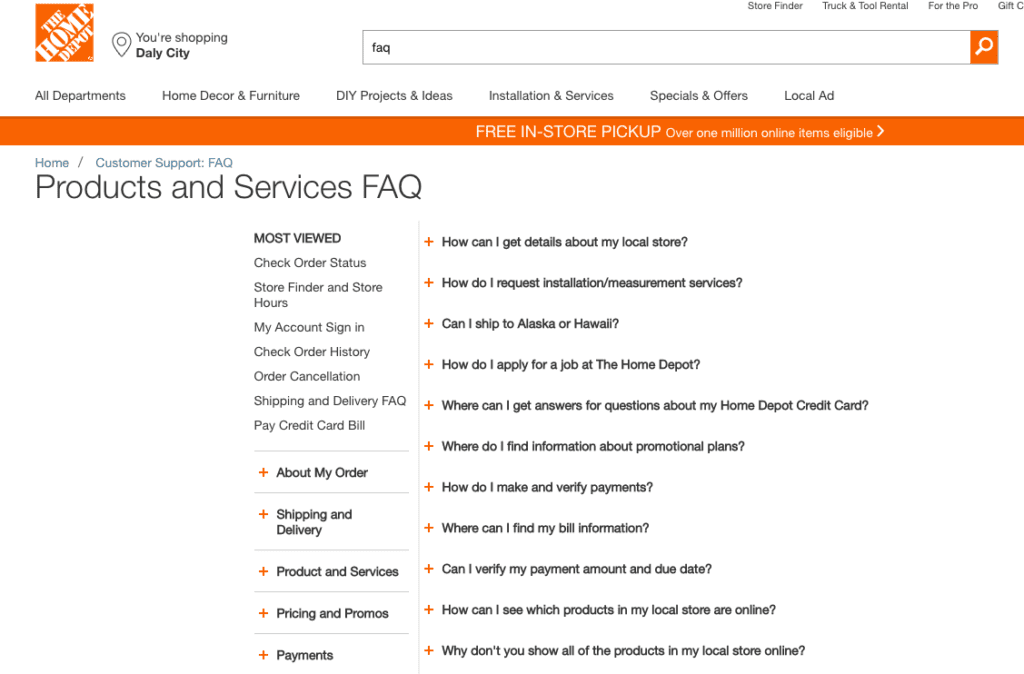
Although the holidays still represent a highly concentrated shopping period, a recent report from Coresight Research said that the holiday season is becoming “less important” for retailers, with more shopping taking place online throughout the year. The year-round need for relevant search results, personalized recommendations, and real-time responsivity will be what helps retailers pull ahead of the pack in the long term.
For more information on how you can be getting more out of your search bar year round, check out Marie Griffin’s piece: How Machine Learning and Autocomplete Guide Users to More Conversions.
LEARN MORE
Contact us today to learn how Lucidworks can help your team create powerful search and discovery applications for your customers and employees.